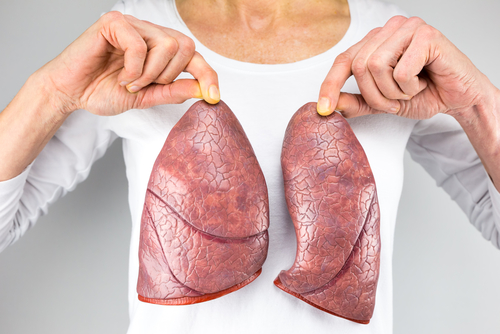Survival Rates Over Time Similar for IPF Patients Given Single or Double Lung Transplant, Study Finds

No significant differences in survival rates, extending out 10 years, were found in idiopathic pulmonary fibrosis (IPF) patients given either a single- or double-lung transplant, a study reports.
These findings, based on data cover more than 2,000 IPF patients who underwent either, suggest a bias in studies favoring a double-lung transplant and support single-organ transplants when appropriate, its researchers said.
The study, “Single And Double Lung Transplantation Have Equivalent Survival for Idiopathic Pulmonary Fibrosis,” was published in the journal The Annals of Thoracic Surgery.
IPF is a progressive disease of unknown origin characterized by increased scarring of lung tissues. As there is no cure, most treatments focus on reversing or slowing tissue scarring and, in more severe cases, a lung transplant is often considered the best option to extend life.
In the medical literature, however, studies conflict regarding whether a double lung transplant (DLT) offers a better chance of survival over a single lung transplant (SLT).
One study, for example, concluded that DLT was the “procedure of choice” for IPF patients younger than 70, and for those who have a high lung allocation score (LAS), a measure whose higher values indicate a greater the chance of survival after a transplant.
But a large number of IPF patients are still treated with SLT, as many in the transplant community think it is a good option for some — or the only option, given availability of transplant organs.
Researchers at NYU Langone Health in New York analyzed data from the Scientific Registry of Transplant Recipients (SRTR) to compare the outcomes in IPF patients who either had a DLT or SLT.
To get the best comparison possible, they analyzed the outcomes of IPF patients who were deemed eligible for both procedures (a DLT or SLT, or concurrently listed patients). This type of direct comparison helps to reduce the bias associated with selecting people listed for a DLT or an SLT specifically (exclusively listed patients).
The database search identified 18,356 people who had lung transplants between January 2007 and May 2017. Of those, the team selected 2,179 IPF patients who were on the transplant list for either a DLT or an SLT.
Patients were then grouped based on which transplant procedure they had: 1,205 (55%) had a DLT, while 974 (45%) had an SLT. Their outcomes were then compared.
Analysis revealed no significant difference in overall survival time whether a concurrently listed IPF patient had a double or single lung transplant.
Overall patient survival rates since being listing were 88.2% for SLT and 88.0% for DLT recipients at one year, 55.3% and 60.8% at five years, and 25.7% and 20.8% at 10 years.
Post-transplant overall survival rates followed a similar trend: 86.0% for SLT versus 85.6% for DLT recipients at one year, 53.6% and 59.1% at five years, and 24.4% and 18.2% at 10 years.
“Whether analyzed by time of listing or time of transplant, overall patient survival curves were not significantly different between groups,” the researchers wrote.
To strengthen the comparison, the team matched 24 characteristics of people receiving the transplant and donors. Among characteristics collected for recipients were age, gender, obesity, diabetes, steroid use, medical condition, mean pulmonary arterial pressure (mPAP), and LAS. Donor characteristics included age, gender, obesity, smoking history, infection risk, and diabetes.
After matching, 466 patients remained in each of the SLT and DLT groups.
Here, too, a comparison of the matched transplant groups showed similar survival rates. Overall survival rates since listing for SLT versus DLT recipients were 88.1% and 88.1% at one year, 56.6% and 61.0% at five years, and 26.6% vs 23.7% at 10 years. The overall post-transplant survival rates for SLT versus DLT recipients were 85.9% and 85.1% at one year, 54.2% and 58.9% at five years, and 24.9% and 22.2% at 10 years.
“Again, whether analyzed by time of listing or time of transplant, overall patient survival curves were not significantly different between groups,” researchers wrote.
Researchers also found that SLT recipients were less likely post-transplant to need prolonged ventilator support (for more than 48 hours) than those given a DLT — 31.6% after SLT versus 42.0% after DLT. There were also trends showing lower post-transplant rates of renal failure, and shorter hospital stays after transplant in the SLT group.
Rates of organ rejection were similar within one-year post-transplant. After DLT, 21.1% of patients had at least one rejection episode that required treatment, compared to 21.9% of patients given a SLT.
Additional analysis showed that SLT recipients had longer wait times for transplant (52.5 vs. 40 days in the DLT group), and a lower pre-transplant LAS than DLT recipients. They were also less likely have been in an intensive care unit prior to transplant, or have required ventilation or extracorporeal membrane oxygenation (artificial lung) support.
“In recipients concurrently listed for SLT and DLT, patient survival was similar regardless of the eventual procedure. These data suggest that the previously purported survival advantage for DLT may purely represent selection bias, and should not preclude the use of SLT in appropriately-selected IPF patients,” the team concluded.







